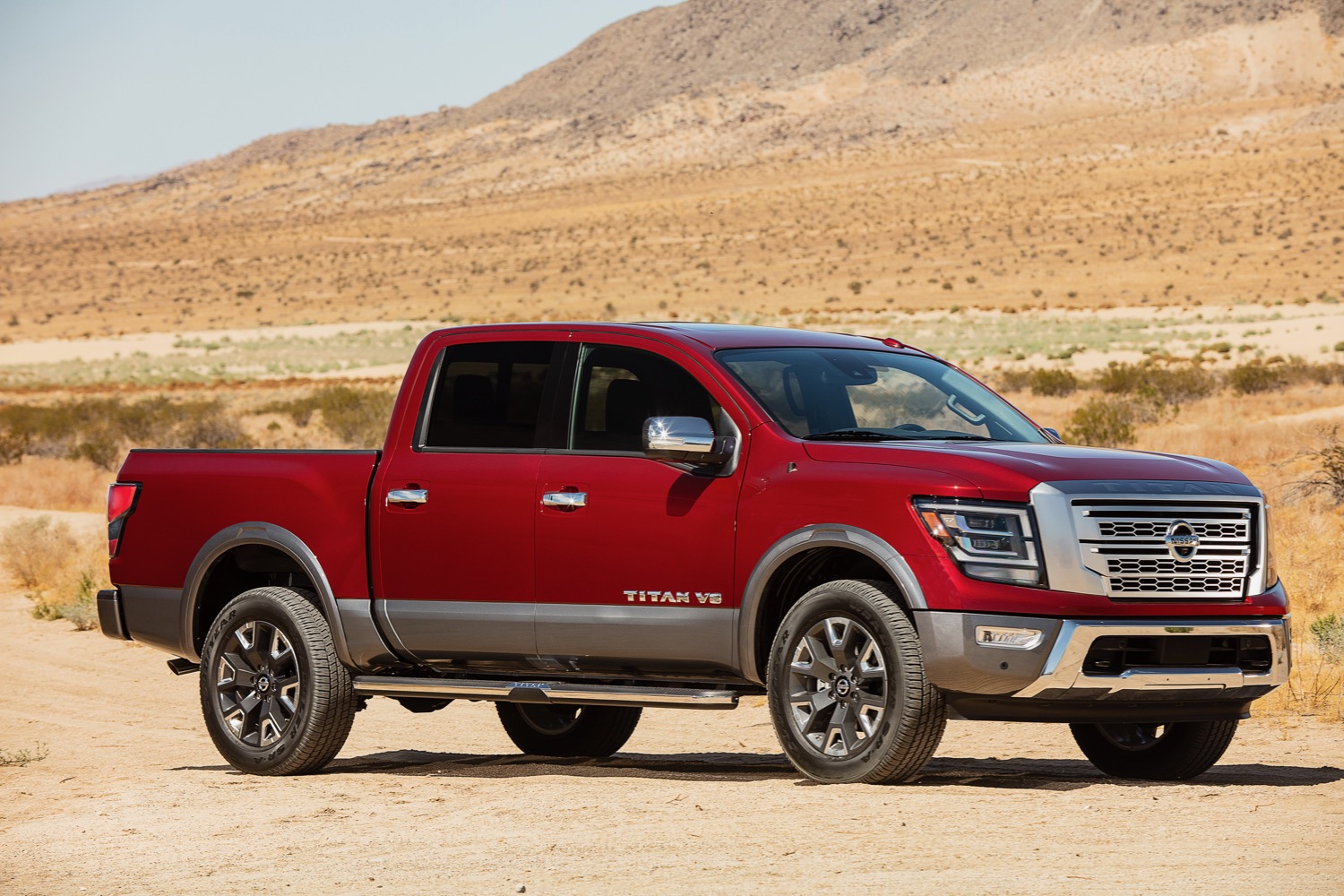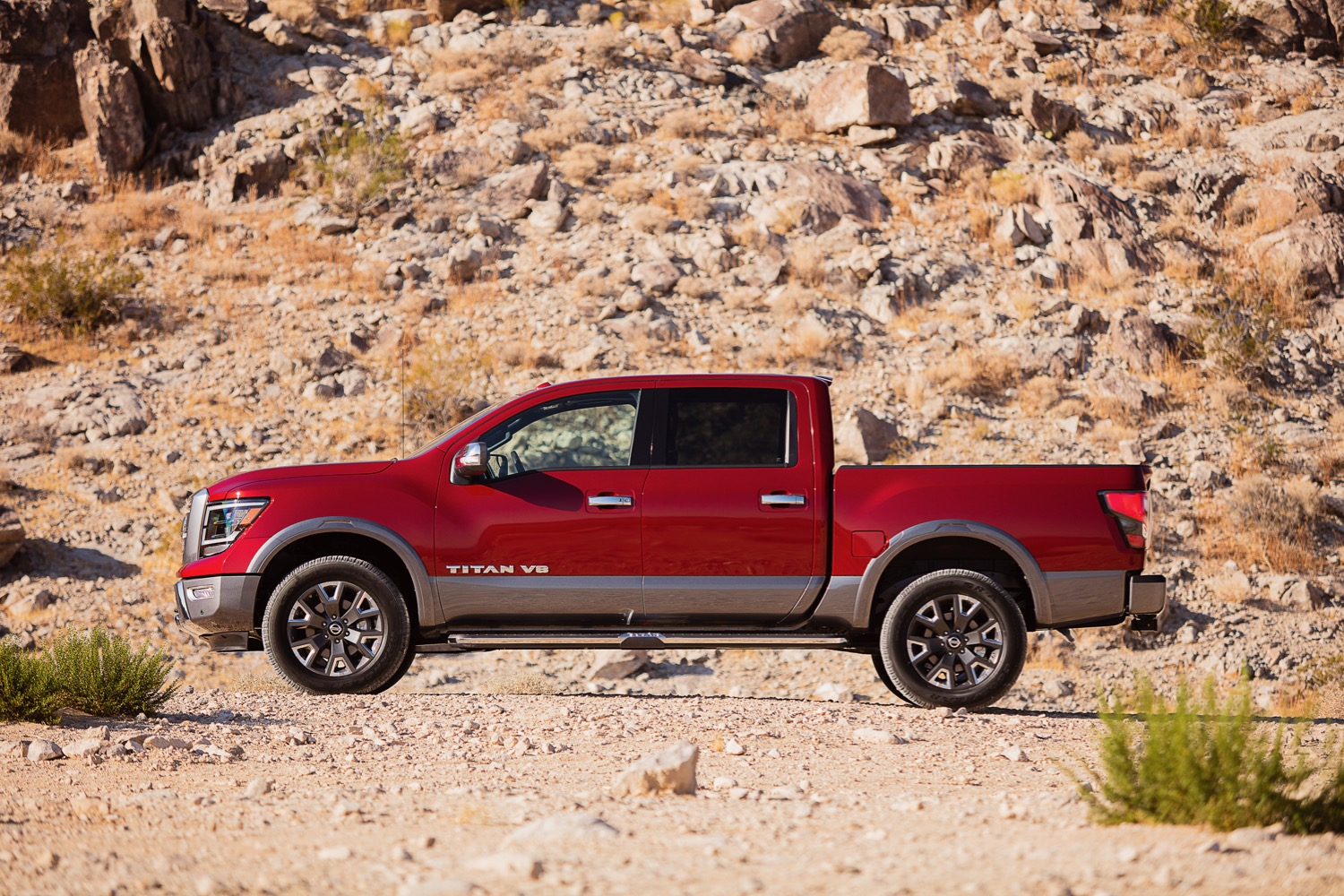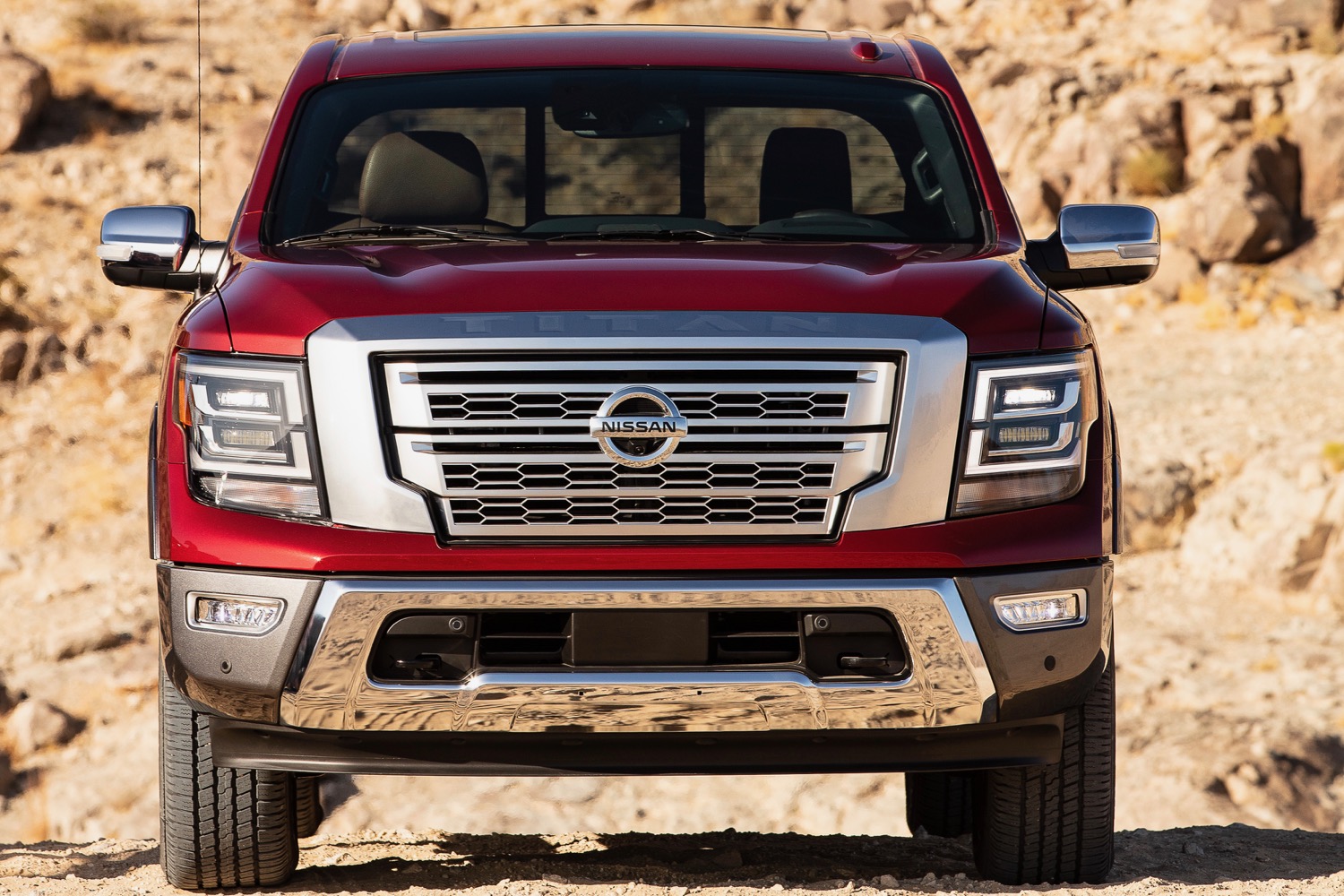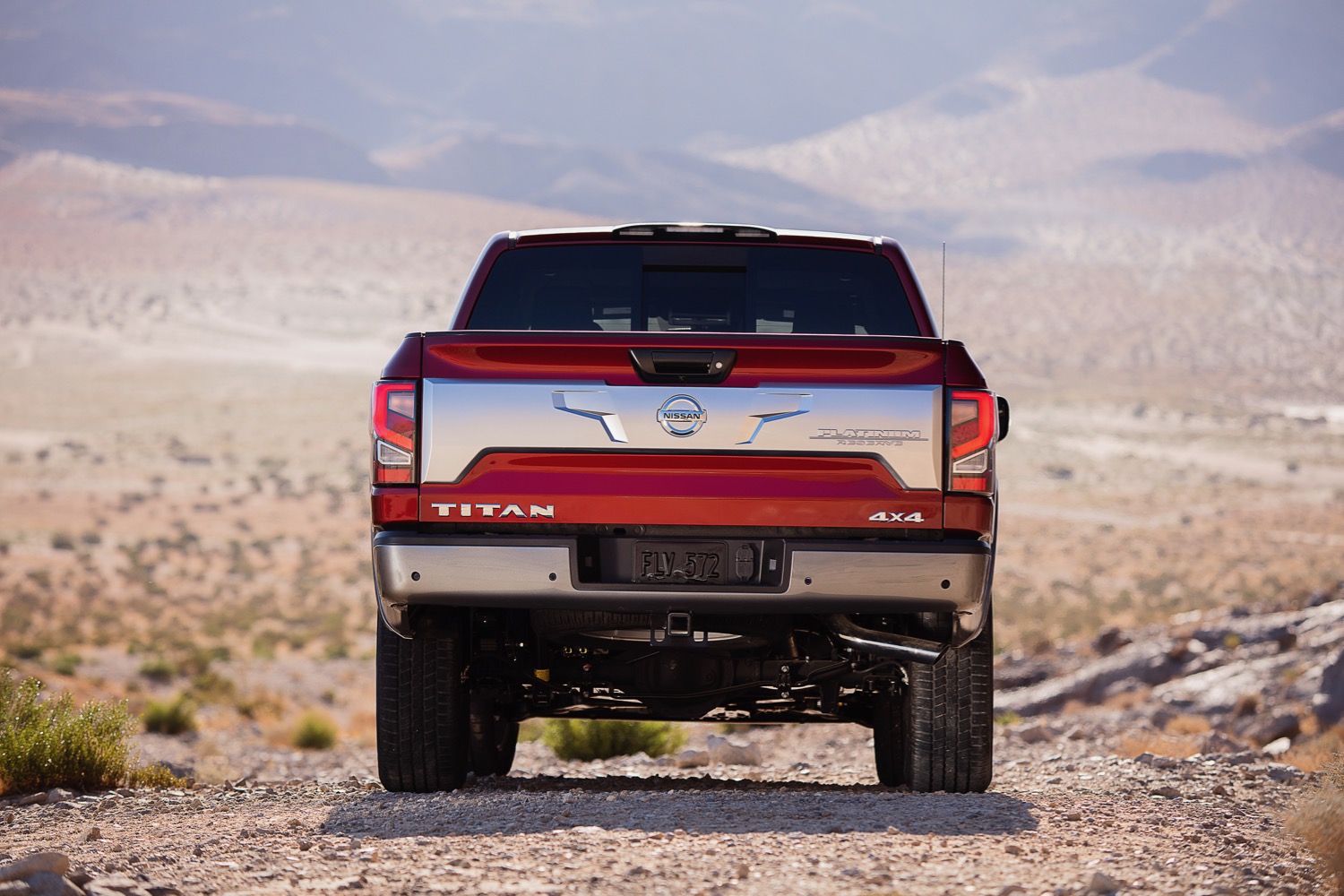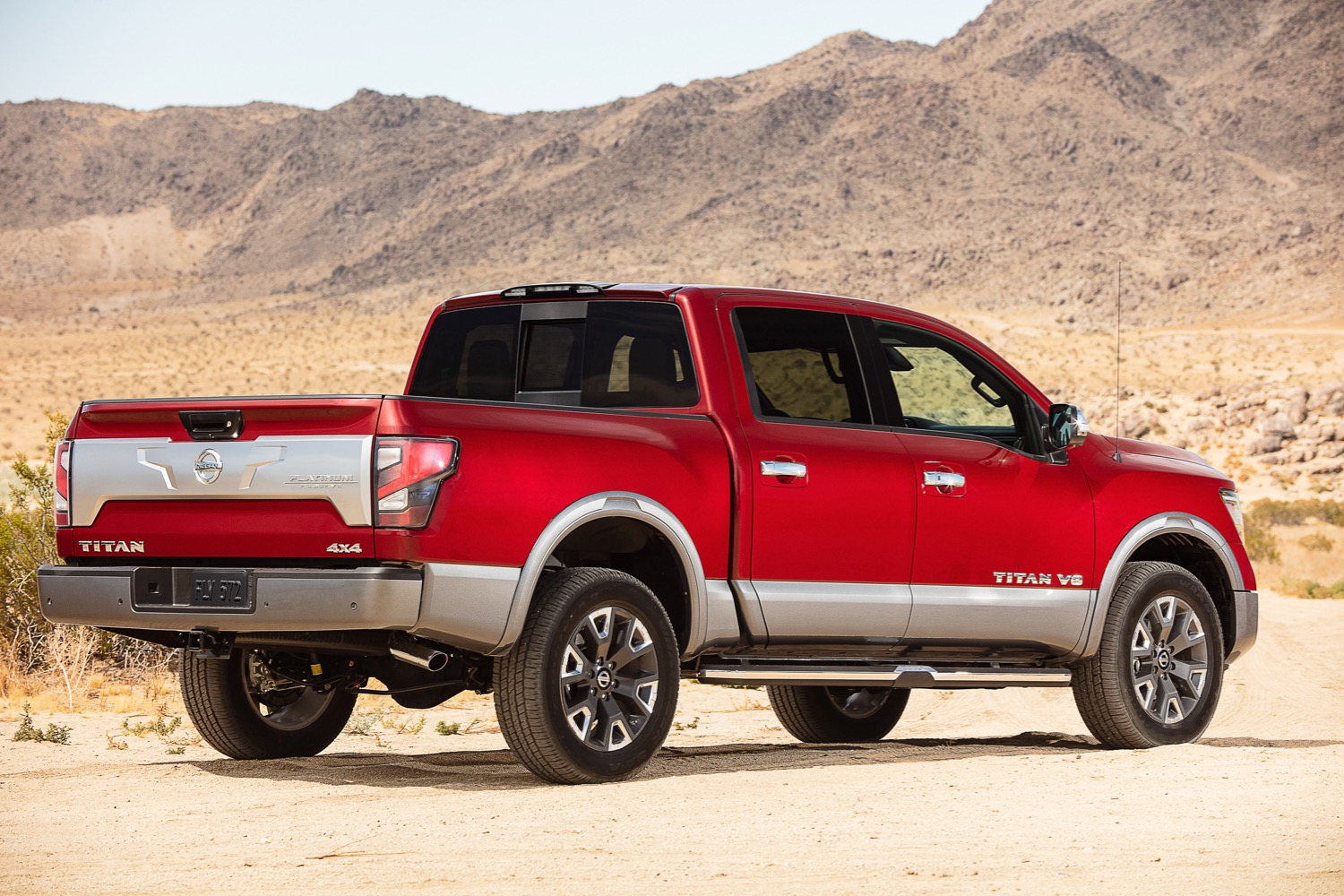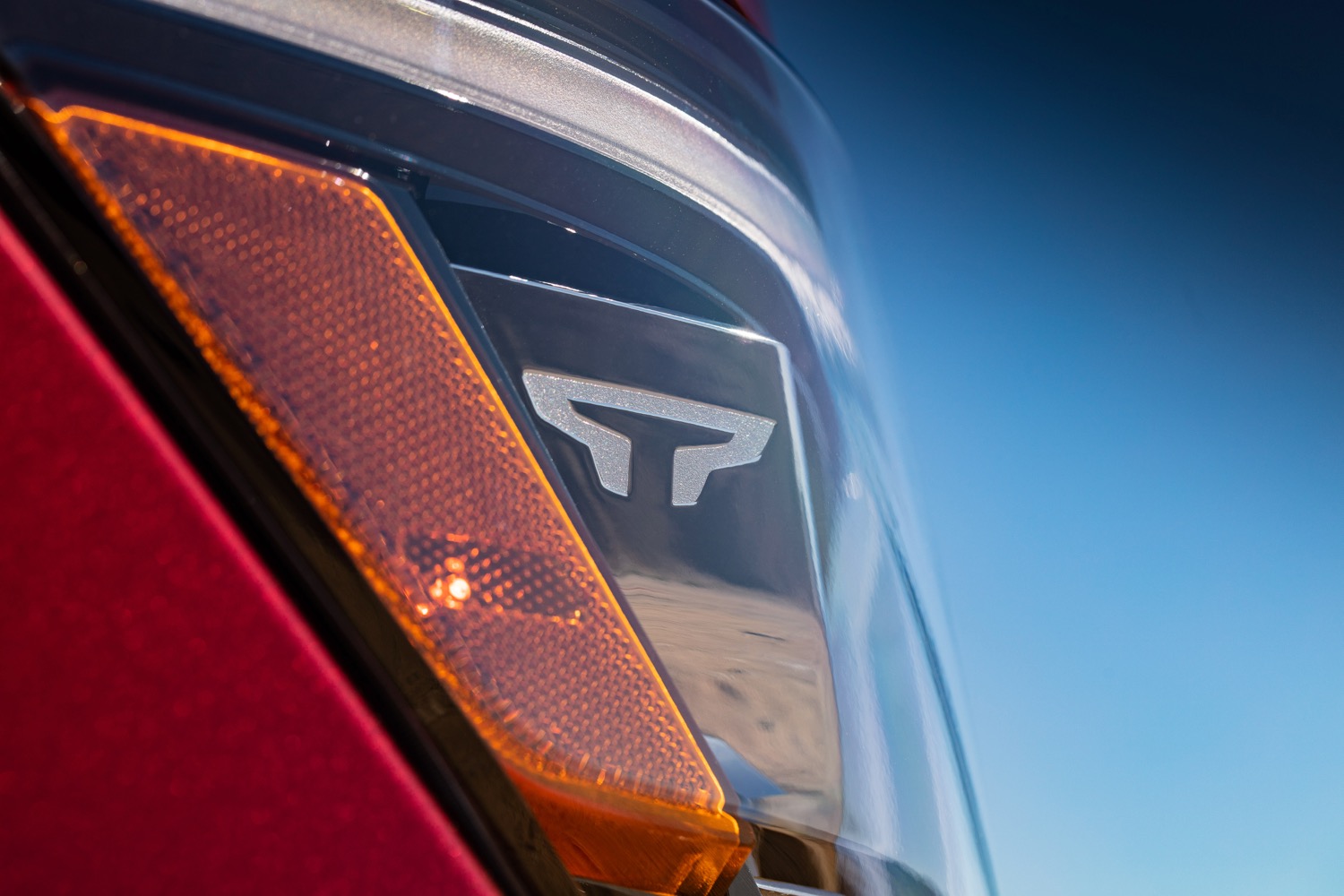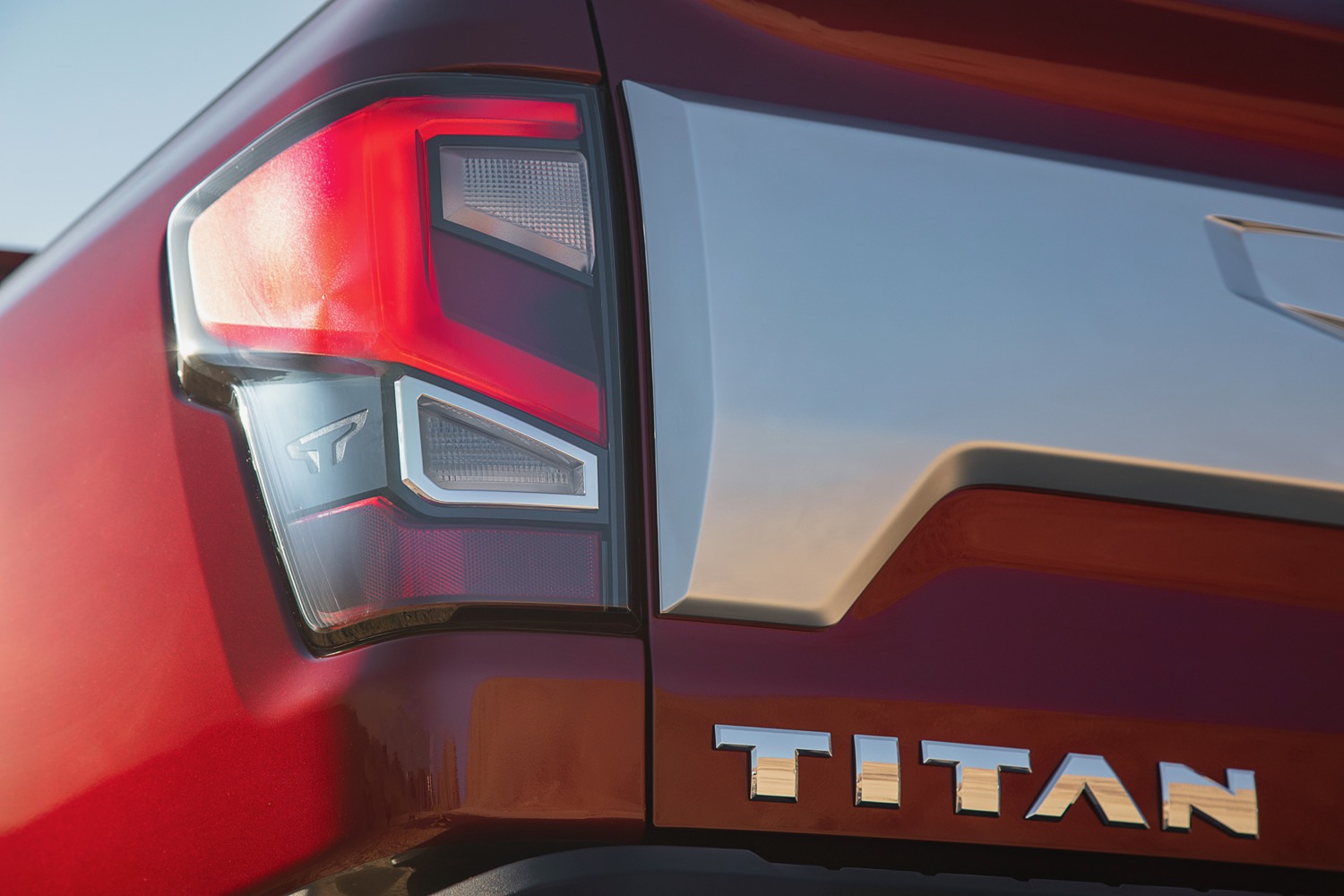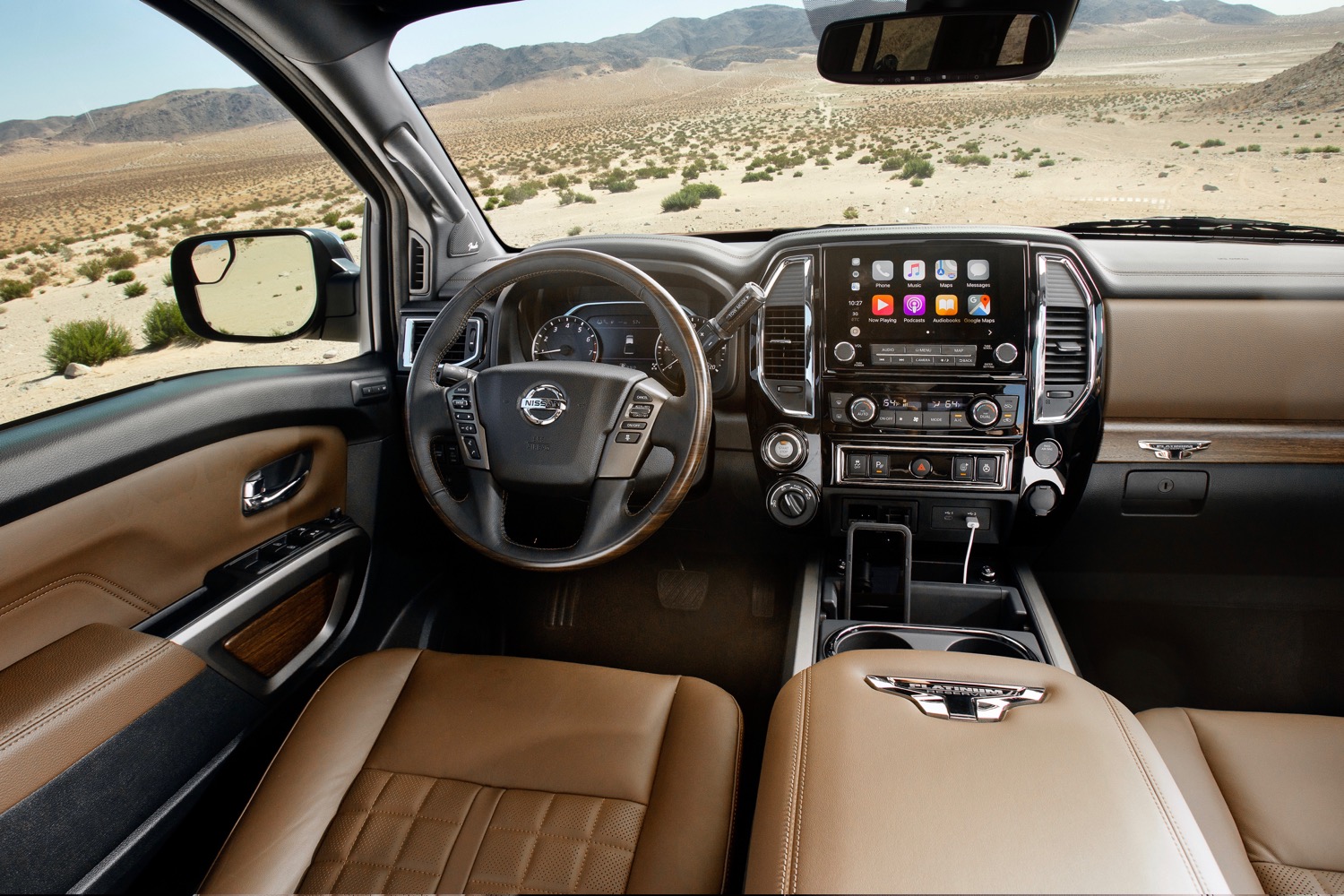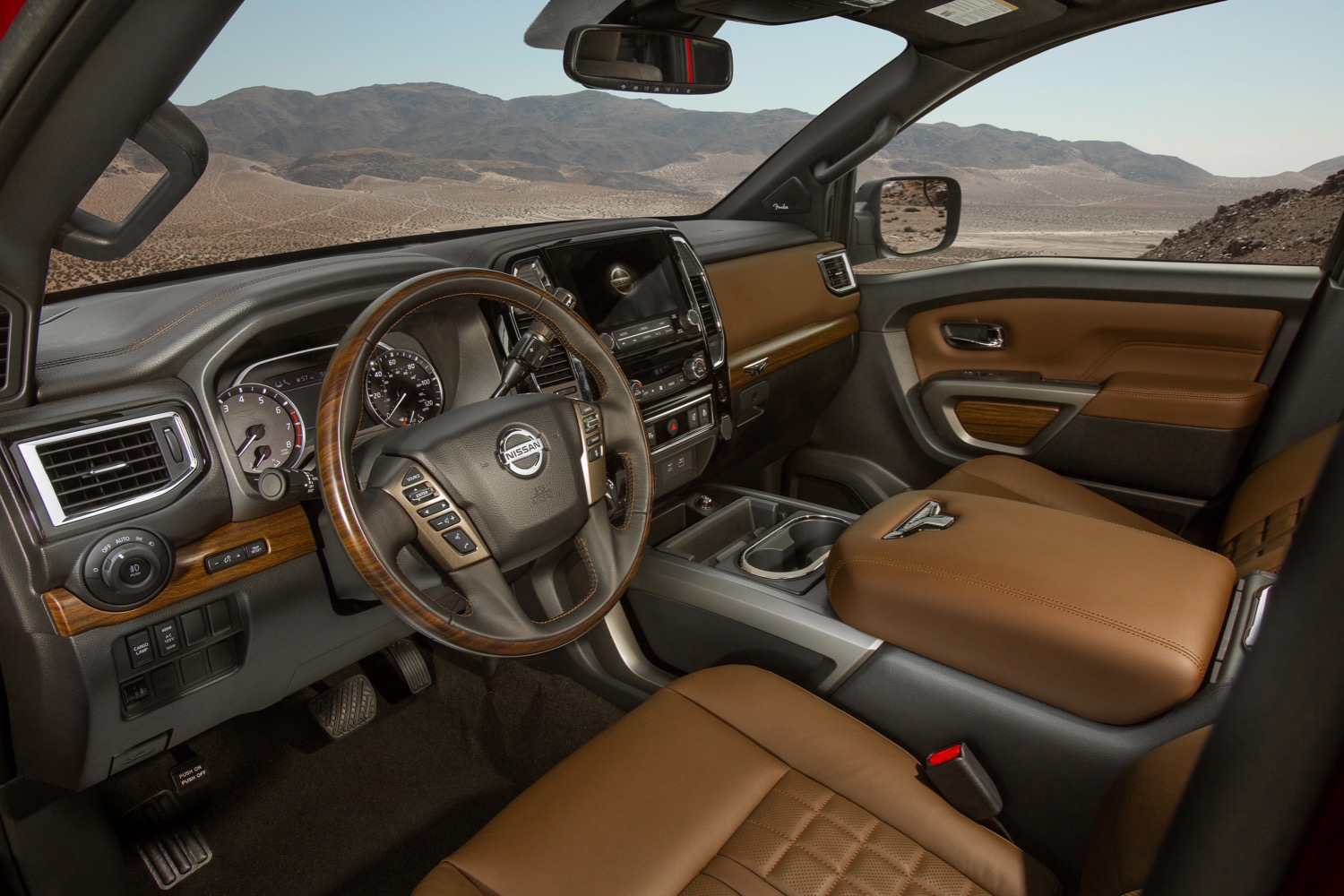Nissan was one of the pioneers of small pickup trucks, but when it comes to full-size models, the Japanese automaker has always played second fiddle to Detroit. The 2020 Nissan Titan gets refreshed tech and a retuned V8 engine as part of the automaker’s ongoing effort to tempt truck buyers away from the Ford F-150, Chevrolet Silverado, and Ram 1500. Will the 2020 Titan succeed where its predecessors failed?
The biggest news may be what Nissan didn’t include on the 2020 Titan. The Titan XD model and its Cummins V8 desel engine are no more. The XD was always an odd proposition, sitting between half-ton trucks like the standard Titan and larger heavy-duty models in price and performance. That apparently wasn’t a big enough niche to justify keeping the diesel option around, so for 2020, a reworked version of the existing 5.6-liter gasoline Endurance V8 is the sole engine option.
Nissan retuned the gasoline engine to produce 400 horsepower and 413 pound-feet of torque, up from 390 hp and 394 lb.-ft. previously. Nissan claims this engine is the most powerful standard V8 in its class, but Ford and Chevy offer optional engines with more power and torque. The Titan narrowly beats the 395 hp and 410 lb.-ft. of the Ram 1500’s optional V8 mild-hybrid powertrain, but the 3.0-liter diesel V6 offered in the Ram makes 480 lb.-ft. of torque. A nine-speed automatic transmission replaces the previous seven-speed gearbox.
The upgraded powertrain is wrapped in revised styling. New headlights produce 120 percent more light on low beam than the 2019 Titan, according to Nissan, but they’re an optional extra. The same goes for the new LED daytime running lights. Other changes include new grille designs (which are now keyed to different trim levels), new taillights, and a new front bumper.
On the inside, the 2020 Titan gets a standard 8.0-inch infotainment screen, with a 9.0-inch screen available as an option. The driver also gets a reconfigurable 7.0-inch display in the instrument cluster. Apple CarPlay and Android Auto are standard, as is a built-in Wi-Fi hot spot that can support up to six devices. A 12-speaker, 485-watt Fender audio system is also available. As before, the Titan gets Nissan’s “Zero Gravity” seats, which were designed using NASA research on the human body to increase comfort on long drives.
The 2020 Titan comes standard with the Nissan Safety Shield 360 bundle of driver aids that includes autonomous emergency braking, blind-spot monitoring, rear cross traffic alert, lane departure warning, automatic high beams, and reverse autonomous braking. Adaptive cruise control, forward collision warning, traffic sign recognition, a driver alertness monitor, and a 360-degree camera system are available at extra cost.
Speaking of cost, we don’t have pricing information for the updated Titan yet, as the truck won’t go on sale until calendar year 2020. Nissan plans to offer the 2020 Titan in King Cab and Crew Cab body styles, with five trim levels — S, SV, Pro-4X, SL, and Platinum Reserve.

